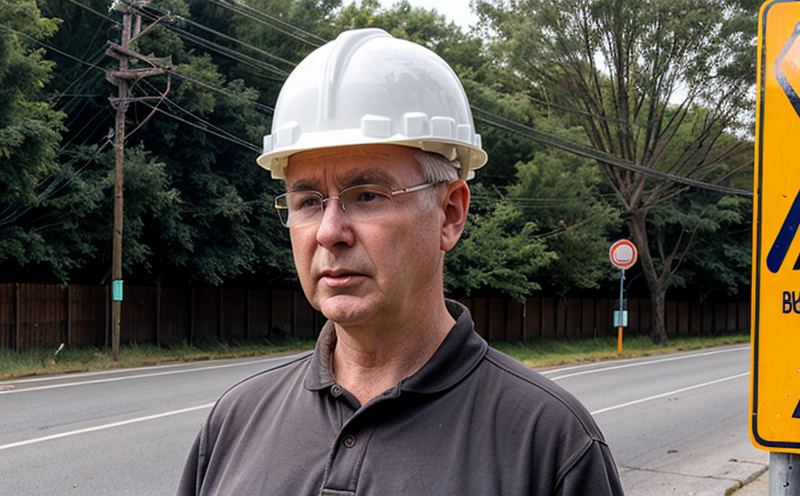ISO 1996-2 Determination of Environmental Noise Levels
The ISO 1996-2 standard provides a comprehensive framework for the measurement and evaluation of environmental noise. This method is widely recognized as a robust tool for assessing noise levels in various environments, including urban areas, industrial sites, and residential zones. The primary objective of this service is to ensure that noise emissions comply with local regulations and international standards.
The ISO 1996-2 standard focuses on the determination of environmental noise levels at specific points within a given area. It covers both stationary sources and mobile sources such as road traffic, aircraft, and railway operations. The methodology involves setting up measuring instruments in defined locations to capture sound pressure levels over a specified period.
The measurement process adheres strictly to ISO 1996-2 guidelines, which specify the placement of microphones, the duration of recordings, and the frequency bands used for analysis. The standard also outlines criteria for selecting representative points within an area, ensuring that measurements are as accurate as possible.
One of the key aspects of this service is the ability to provide detailed reports on noise levels over extended periods. These reports can be crucial for understanding long-term trends and identifying sources of excessive noise pollution. The data collected through ISO 1996-2 compliant testing is invaluable for environmental impact assessments, urban planning, and compliance monitoring.
The service also offers a range of supplementary services that complement the primary measurement process. These include sound propagation modeling, which helps predict how noise will travel through different environments, and noise abatement strategies, providing recommendations on reducing noise levels in specific areas.
By leveraging ISO 1996-2 standards, we ensure that our clients receive accurate and reliable noise measurements that meet the highest international standards. This service is particularly beneficial for quality managers, compliance officers, R&D engineers, and procurement teams who are responsible for ensuring environmental compliance and reducing noise pollution.
Benefits
- Compliance with International Standards: Our ISO 1996-2 compliant testing ensures that all measurements adhere to the highest international standards, providing peace of mind for regulatory compliance.
- Data Accuracy and Reliability: Using advanced instrumentation and adherence to strict protocols, we deliver precise noise level data, crucial for making informed decisions.
- Sustainable Environmental Impact: By identifying sources of excessive noise, our service helps reduce environmental impact and promotes sustainable practices.
- Long-Term Monitoring: Continuous monitoring allows for the identification of trends over time, aiding in effective noise management strategies.
- Risk Management: Early detection of noise pollution can mitigate potential legal risks and improve public relations.
- Cost Efficiency: By pinpointing sources of excessive noise, our service helps clients implement targeted abatement measures, reducing overall costs.
- Technological Expertise: Leveraging the latest in acoustic measurement technology ensures that we stay at the forefront of industry best practices.
Quality and Reliability Assurance
At our laboratory, ensuring the highest quality and reliability is paramount. Our ISO 1996-2 compliant testing is conducted by highly skilled technicians using state-of-the-art equipment. Each measurement is verified against international standards to ensure accuracy.
We employ rigorous quality control measures at every stage of the process, from instrument calibration to data analysis. This ensures that all noise level reports are not only precise but also reproducible, providing a consistent benchmark for comparison over time.
The reliability of our service is further enhanced by regular training and certification of our staff in accordance with ISO 1996-2 guidelines. Our commitment to quality extends beyond the laboratory, as we continuously seek feedback from clients to improve our services.
Environmental and Sustainability Contributions
The determination of environmental noise levels plays a crucial role in promoting sustainable urban environments. By providing accurate noise data, we enable cities and communities to make informed decisions that reduce noise pollution.
Noise pollution can have significant impacts on public health and well-being. Our service helps mitigate these effects by identifying sources of excessive noise and recommending abatement strategies. This not only improves the quality of life for residents but also contributes to a more sustainable urban environment.
Furthermore, our compliance with ISO 1996-2 standards ensures that all measurements are consistent and comparable across different regions. This consistency is vital for global sustainability initiatives aimed at reducing noise pollution on an international scale.
By offering this service, we contribute to the broader goal of environmental stewardship. Our clients can leverage our expertise to implement effective noise management strategies that align with their sustainability goals.





